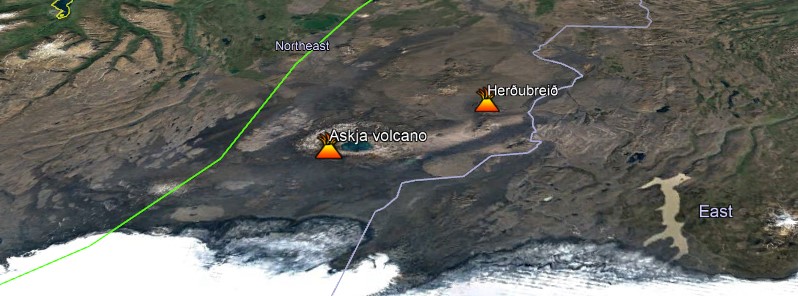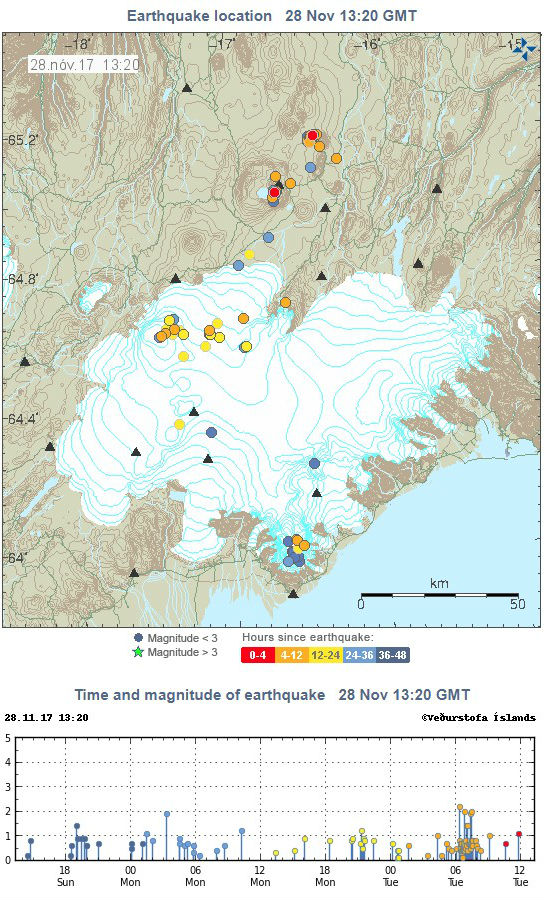Earthquake swarm detected near Herðubreið, Askja volcanic area, Iceland

A notable amount of earthquakes occurred near Herðubreið, Iceland's Askja volcanic area on Tuesday, November 28, 2017, with magnitudes ranging from 0.4 to 2.0 and depths between 2.5 and 12.8 km (1.5 – 8 miles).
In total, the Icelandic Met Office (IMO) registered 45 earthquakes in the area over the past 48 hours. The first, M0.8 at a depth of 8.2 km (5 miles), was registered at 14:45 UTC on November 26 and was followed by M0.4 (at 7.7 km / 4.8 miles), M0.9 (at 6.2 km / 4.8 miles) and M0.8 at (at 7.8 km / 4.8 miles) on November 27.
Quakes intensified after 05:00 UTC on November 28, with 40 quakes by 11:48 UTC (M0.4 – 2.0; depths 2.5 – 12.8 km / 1.5 – 8 miles).
IMO geologists say this is not unusual and does not point to any volcanic unrest.

Image credit: IMO
Geological summary
Askja is a large basaltic central volcano that forms the Dyngjufjöll massif. It is truncated by three overlapping calderas, the largest of which is 8 km (5 miles) wide and may have been produced primarily from subglacial ring-fracture eruptions rather than by subsidence. A major rhyolitic explosive eruption from Dyngjufjöll about 10 000 years ago was in part associated with the formation of Askja caldera.
Many postglacial eruptions also occurred along the ring-fracture. A major explosive eruption on the SE caldera margin in 1875 was one of Iceland's largest during historical time. It resulted in the formation of a smaller 4.5-km-wide (2.8 miles) caldera, now filled by Öskjuvatn lake, that truncates the rim of the larger central caldera. The 100-km-long (62 miles) Askja fissure swarm, which includes the Sveinagja graben, is also related to the Askja volcanic system, as are several small shield volcanoes such as Kollatadyngja. Twentieth-century eruptions have produced lava flows from vents located mostly near Öskjuvatn lake.
The renowned flat-topped Icelandic table mountain Herdubreid, located NE of Askja volcano, was active until the late Pleistocene. (GVP)
Featured image credit: Google. Annotation: TW

Commenting rules and guidelines
We value the thoughts and opinions of our readers and welcome healthy discussions on our website. In order to maintain a respectful and positive community, we ask that all commenters follow these rules:
We reserve the right to remove any comments that violate these rules. By commenting on our website, you agree to abide by these guidelines. Thank you for helping to create a positive and welcoming environment for all.